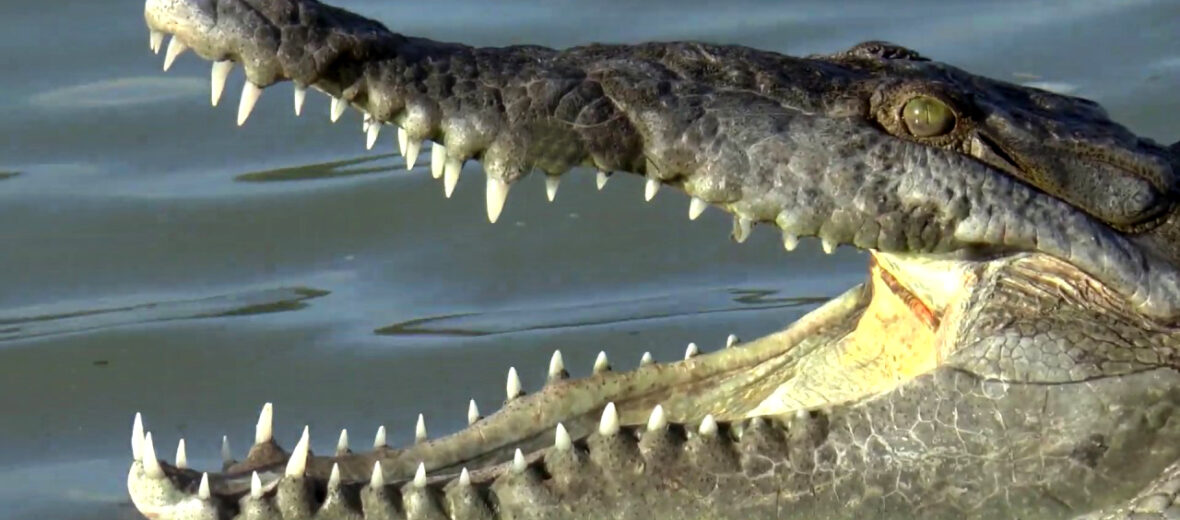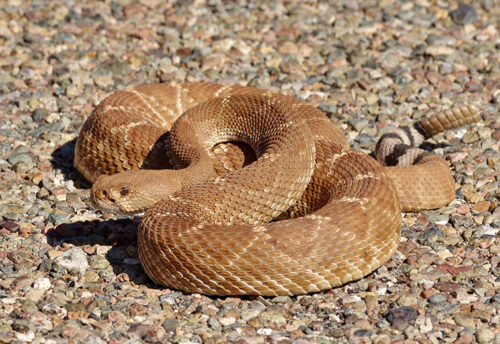
Ranking among the largest of the crocodile species in the world. The American crocodile can be found in southern Florida, Atlantic and Pacific coasts of southern Mexico, down to the Caribbean islands, Jamaica, Hispaniola, Cuba, Grand Cayman, Peru, and Venezuela in South America. They prefer brackish (salty) estuaries, lakes, reservoirs, rivers, and swamps. Due to habitat destruction, vehicle strike (being hit by water craft), invasive species (and with them disease), hunting, trapping, and climate change these critters number only around 5,000 and are listed as Vulnerable by the IUCN.
First the Stats…
Scientific name: Crocodylus acutus
Weight: Up to 1,100 lbs.
Length: Up to 16 feet
Lifespan: Up to 70 years
Now on to the Facts!
1.) American crocodiles are primarily nocturnal (active at night).
2.) Not being ones to socialize, these critters are solitary and typically only come together to mate or when the sun is setting and their bodies are cool.
3.) These crocs are extremely defensive, which is a common trait of intelligent reptilians.
4.) During the dry season, they will typically submerge themselves in mud.
5.) Like American alligators, they will gape when sun bathing, to assist in thermoregulation (regulation of body heat).
But wait, there’s more on the American crocodile!
6.) A group of crocodiles is called a congregation, bask, float, or nest.
7.) These crocodilians prey on birds, fish, frogs, small mammals, and turtles. Hatchling crocs feed on insects and juveniles prey mostly on fish.
Did you know…?
The bite force of an American crocodile is around 3,600 PSI! The strongest bite force of any living animal is from the saltwater crocodile at 3,700 PSI!
8.) American crocs are polygynous (1 male mates with several females).
9.) Breeding season lasts from April – May and during this time of year the adults become very territorial and even more defensive.
10.) Males fight 1 another for breeding rights.
But wait, there’s still more on the American crocodile!
11.) Females are gravid (pregnancy for reptiles) for up to 3 months and later yield up to 60 eggs.
12.) Eggs are laid in a hole or in a mound of decaying vegetation and mud.
Did you know…?
In an effort to communicate intent to breed, the males will emit infrasonic sounds that vibrate the water’s surface. This is called bellowing.
13.) After about 10 weeks time, mom will assist the hatchlings in escaping their eggs by gently picking them up and cracking open the shells with her powerful jaws. The hatchlings are born precocial (totally self-sufficient at birth) and leave almost immediately & are left to their own devices.
14.) Like other crocodilians, they swallow stones (called gastroliths) that aid in digestion of food.
15.) possessing special glands under their tongues, these crocs can filter out the salt allowing them to drink saltwater.
But wait, there’s still a little more on the American crocodile!
16.) While old world crocs rely on birds to clean parasites off their bodies, American crocs rely on fish to perform the same task.
17.) Like birds, their hearts are 4 chambered.
18.) The largest American crocodile ever documented was found in the Tarcoles River – Costa Rica – and measured 18 feet long!
19.) While being the most vocal of reptiles crocodiles, like the American crocs, will not only rely on a variety of vocalizations but will also head and tail slap the water to communicate mood and intent.
Now a Short American Crocodile Video!
Be sure to share & comment below! Also, check out the Critter Science YouTube channel. Videos added frequently!
Want to suggest a critter for me to write about? Let me know here.



